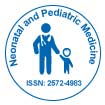Hypothermia: Understanding the Dangers of Low Body Temperature
Received: 03-Feb-2025 / Manuscript No. nnp-25-171021 / Editor assigned: 06-Feb-2025 / PreQC No. nnp-25-171021 / Reviewed: 18-Feb-2025 / QC No. nnp-25-171021 / Revised: 22-Feb-2025 / Manuscript No. nnp-25-171021 / Published Date: 28-Feb-2025 DOI: 10.4172/2572-4983.1000506
Abstract
Introduction
Hypothermia is a medical condition that occurs when the body’s core temperature drops below the normal range of approximately 36.5–37.5°C (97.7–99.5°F). It is a potentially life-threatening condition that impairs the body’s ability to function and can lead to organ failure and death if not treated promptly. Hypothermia can affect anyone, but it is particularly dangerous for infants, the elderly, and individuals exposed to extreme cold for prolonged periods. Understanding the causes, symptoms, and treatment options for hypothermia is crucial for preventing serious complications and saving lives [1], [2].
Discussion
Hypothermia can result from prolonged exposure to cold weather, immersion in cold water, inadequate clothing, or a combination of these factors. Certain medical conditions, such as diabetes, hypothyroidism, and malnutrition, can also increase susceptibility. In newborns and infants, hypothermia may develop quickly due to their relatively large surface area and limited ability to generate heat. In adults, factors such as alcohol consumption, exhaustion, and wet clothing can accelerate heat loss and increase the risk [3], [4].
The symptoms of hypothermia vary depending on its severity. Mild hypothermia may present as shivering, pale or cold skin, fatigue, and confusion. Moderate hypothermia is characterized by stronger confusion, slowed movements, slurred speech, and decreased heart rate. Severe hypothermia can lead to the cessation of shivering, dangerously slow breathing, unconsciousness, and ultimately, cardiac arrest. Recognizing the early signs is essential, as prompt action can prevent the condition from progressing to a critical stage [5], [6].
Treatment of hypothermia focuses on restoring normal body temperature gradually and safely. Initial steps include moving the person to a warm environment, removing wet clothing, and covering them with dry blankets. Warm, non-alcoholic beverages can help in mild cases, while severe hypothermia requires emergency medical care. In hospitals, techniques such as heated intravenous fluids, warm blankets, and in extreme cases, extracorporeal warming devices are employed. Importantly, rapid rewarming of severely hypothermic individuals must be done carefully to avoid complications like “afterdrop,” where the core temperature continues to fall as cold blood from the extremities returns to the heart [7], [8].
Prevention is the most effective strategy against hypothermia. Wearing appropriate clothing in layers, keeping dry, avoiding prolonged exposure to cold, and maintaining proper nutrition and hydration are essential preventive measures. Awareness of weather conditions and early recognition of symptoms also play a crucial role, particularly for vulnerable populations like infants, the elderly, and outdoor workers or adventurers [9], [10].
Conclusion
Hypothermia is a serious condition that can affect anyone exposed to cold environments or with compromised heat regulation. Recognizing the causes, early symptoms, and proper treatment methods is vital to preventing life-threatening complications. While medical intervention is necessary in severe cases, prevention through proper clothing, awareness, and preparedness remains the most effective defense. Understanding hypothermia not only saves lives but also underscores the importance of respecting environmental conditions and protecting vulnerable individuals from the dangers of extreme cold. By staying informed and vigilant, both individuals and communities can reduce the risks associated with this potentially fatal condition.
References
- Ocheke IE, Antwi S, Gajjar P, McCulloch MI, Nourse P (2014) Pelvi-ureteric junction obstruction at Red Cross Children’s Hospital, Cape Town:a six year review. Arab J Nephrol Transplant 7: 33-36.
- Capello SA, Kogan BA, Giorgi LJ (2005) Kaufman RP. Prenatal ultrasound has led to earlier detection and repair of ureteropelvic junction obstruction. J Urol 174: 1425-1428.
- Johnston JH, Evans JP, Glassberg KI, Shapiro SR (1977) Pelvic hydronephrosis in children: a review of 219 personal cases. J Urol 117: 97-101.
- Williams DI, Kenawi MM (1976) The prognosis of pelviureteric obstruction in childhood: a review of 190 cases. Eur Urol 2: 57-63.
- Lebowitz RL, Griscom NT (1977) Neonatal hydronephrosis: 146 cases. Radiol Clin North Am 15: 49-59.
- Hubertus J, Plieninger S, Martinovic V, Heinrich M, Schuster T, et al. (2013) Children and adolescents with ureteropelvic junction obstruction: is an additional voiding cystourethrogram necessary? Results of a multicenter study. Wor J Urol 31: 683-687.
- Swenson DW, Darge K, Ziniel SI, Chow JS (2015) Characterizing upper urinary tract dilation on ultrasound: a survey of North American pediatric radiologists’ practices. Pedia Radiol 45: 686-694.
- Hussain, Walid A, Jeremy D (2019) Approaches to Noninvasive Respiratory Support in Preterm Infants: From CPAP to NAVA. NeoReviews 20: 213–221.
- Bordessoule, Alice (2012) Neurally Adjusted Ventilatory Assist Improves Patient–Ventilator Interaction in Infants as Compared with Conventional Ventilation. Pedia Res 72: 194–202.
- Chiew, Yeong Shiong (2013) Effects of Neurally Adjusted Ventilatory Assist [NAVA] Levels in Non-Invasive Ventilated Patients: Titrating NAVA Levels with Electric Diaphragmatic Activity and Tidal Volume Matching. BioMedi Eng 12: 456-564.
Citation: Rohit K (2025) Hypothermia: Understanding the Dangers of Low Body Temperature. Neonat Pediatr Med 11: 506. DOI: 10.4172/2572-4983.1000506
Copyright: © 2025 Rohit K. This is an open-access article distributed under the terms of the Creative Commons Attribution License, which permits unrestricted use, distribution, and reproduction in any medium, provided the original author and source are credited.
Select your language of interest to view the total content in your interested language
Share This Article
Recommended Journals
Open Access Journals
Article Tools
Article Usage
- Total views: 234
- [From(publication date): 0-0 - Dec 10, 2025]
- Breakdown by view type
- HTML page views: 173
- PDF downloads: 61
